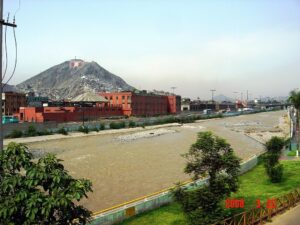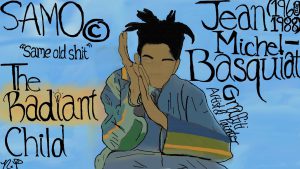Many people know of the Mexican holiday Día de Los Muertos, which is filled with vibrant colors and intricately painted faces. What many people don’t know is that this holiday originated over 3000 years ago with the Aztec empire. The Spanish Conquistadors first recorded a Día de Los Muertos celebration during the 16th century. When the Aztecs had begun this tradition, they weren’t remembering loved ones who passed, but they were worshiping the queen of the underworld and protector of the dead.1

This Aztec queen was Mictecacihuatl, “Lady of the Dead,” Queen of Mictlan.2 According to Aztec legend, Mictecacihuatl was sacrificed as an infant and placed in the underworld to become the wife of Miclantecuhtl, the king of the underworld. In the underworld, her role was to watch over the bones of past lives, which would be used to create new life in the living world. However, in order for the bones to be able to create new life, they needed to be stolen from Mictecacihuatl to be brought to the living world. As their protector, part of her own life would be carried with the stolen bones. Even after the bones were stolen, she would continue her duty to protect them by returning to the living world every year to make sure the bones were being properly taken care of. When the time came for her to return to the living world, the Aztecs celebrated Mictecacihuatl’s return with death festivals and traditional dances, to honor her for her protection of the bones that created life and to seek protection for those who died.3

The Aztecs celebrated Día de Los Muertos much differently than it is celebrated today due to the Spanish conquistadors and Catholicism. The Spanish changed the lives of the indigenous peoples wherever they went, from taking land for the Spanish throne to converting people to Catholicism. Many traditions changed, including those of Día de Los Muertos.4 The Aztecs laid out offerings for the King and Queen of the Underworld for the whole month of August, and the Spanish were the first outsiders to witness this honoring of Mictecacihuatl by the Aztecs. Not long after the Spanish exposure to this festival, the Spanish combined the Aztec tradition with Catholicism. Syncretism, the blending of Spanish and indigenous beliefs and practices, combined the Aztec traditions of Día de Los Muertos with the Spanish traditions of All Saint’s Day and All Souls Day.5 Some examples of syncretism between Catholicism and Día de Los Muertos are the symbols that are most recognizable with Día de Muertos, such as decorated skulls and skeletons, and the Spanish character “La Catrina,” who represents Mictecacihuatl.6 The merging of Catholicism with the Aztec religious beliefs began the evolution of how Día de Los Muertos, transforming how it is celebrated today.

Despite that the name Día de Los Muertos translates to Day of the Dead in English, the holiday is actually the celebration of life. Día de Los Muertos doesn’t focus on death and mourning of a loved one. It’s seen as a happy celebration where family members of all generations, deceased and alive, can be together as one. The traditions of this holiday have changed from honoring the queen of the underworld Mictecacihuatl to honoring those who have passed.7 It’s a time of colorful festivals and parades, beautifully painted colorful skulls, marigold flowers, decorated ofrendas, grave site visits and the smells of traditional Mexican foods and incense in the air. Although it is primarily celebrated in Mexico, some parts of the United States, especially cities and towns on the Mexican border, have adopted the tradition and celebrate the remembrance of their deceased loved ones.
- MasterFILE Complete, 2008, s.v. “Día de los Muertos, by Benjamin Perea. ↵
- Sin Jones, Mictecacihuatl, Santa Muerte, 2010, 1-16. ↵
- Sin Jones, Mictecacihuatl, Santa Muerte, 2010, 1-16. ↵
- Mark Lacy, Origins of El Día de Los Muertos: The Prehispanic Festival of the Dead Defies Cultural Invasions of Mexico, (History Institute for Culture), 1. ↵
- Mark Lacy, Origins of El Día de Los Muertos: The Prehispanic Festival of the Dead Defies Cultural Invasions of Mexico, (History Institute for Culture), 1. ↵
- Mark Lacy, Origins of El Día de Los Muertos: The Prehispanic Festival of the Dead Defies Cultural Invasions of Mexico, (History Institute for Culture), 1. ↵
- Christina Zarate, Día de Los Muertos, (Smithsonian National Museum of American History), 2-7. ↵



114 comments
Daniela Martinez
As someone who comes from a Hispanic family, it was very interesting to read this article. I liked how the article highlights that the day of the dead is not a day of mourning but a day in which we celebrate and remember the lives of loved ones that have passed. I also liked how the article gives a background to the holiday. Most of all I like how this article explains what the holiday in a way that can be understood even by someone who has no previous knowledge on what it actually means.
Daniela Cardona
I have always known Dia de los Muertos to be a lively celebration and remembrance of family members who have passed before you. Reading that it was originally a celebration of the queen of the underworld had me very confused. I can’t quite wrap my head around the fact that she ruled over the underworld but was somehow good and breathed good life into the stolen bones. The article was well written but the traditions itself confused me.
Mariah Cavanaugh
It is amazing how many traditions span back centuries and borrow from past societies and cultures. It is nice to think that in some small way these ancient traditions live on in the world, even if the reason for celebrating has changed. I have always liked how Dia de los Muertos connects the living and the dead to honor the loved ones we have lost. It is a very moving tradition.
Crystal Baeza
I loved how the writer spoke about the Day of the Dead being a holiday to rejoice and remember those in honor rather than mourn all day. It’s a beautiful celebration filled with vibrant colors, delicious food, and ofrendas filled with photos of those who passed. It’s a time to remember the sweet memories and appreciate the traditions passed from time to time. Since I can remember my family and I have celebrated Dia de los Muertos but I never knew the background information of how it originally became what it is today. This article was a great read and described the celebration perfectly!
Lilliana Canales
I like the idea of worshiping an underworld queen, however remembering ancestors isn’t bad either. As mentioned in the article, Mictecacihuatl is now referred to La Catrina, and in pop culture, sometimes La Muerte. I had no knowledge of La Catrina being an underworld queen or collecting bones so that background knowledge presented in this article was really interesting to me.
Clarissa Gonzalez
Growing up in a predominately Hispanic city, San Antonio, I was always very aware of Dia De Los Muertos. In my family, we actually don’t celebrate this holiday, but it is something I’ve learned a lot about over my almost 19 years here. In my Spanish classes in high school, we would do activities in the October dedicated to this, and reading this article just brought back so much information from what I learned a couple years ago.
Caden Floyd
Everyone learns about dia de los muertos in high school Spanish classes, but I never knew how this famous holiday originated. I love the festivities and celebrations everyone does to worship the queen of the underworld and remember their dead. I briefly knew of this subject, but this article was really good at describing the specifics and tells a great story.
Luisa Ortiz
Dia de los muertos is my favorite tradition growing up as a child, in my school every class was responsible for an altar! As I got older we started learning the meaning behind altars and the traditions of Dia de los muertos, I loved it because every state in Mexico has a different way of decorating the altars! Thank you for writing such a great article that talks about tradition, culture, and history!
Aneesa Zubair
I learned a lot by reading this article. I knew Dia de Los Muertos has been a tradition among Catholic Mexicans, but I didn’t know much about its Aztec origins. It was interesting to learn that the holiday began as a celebration not of the dead themselves, but of the Queen Mictecacihuatl. Over time, this meaning of the holiday was lost as Spaniards introduced their own beliefs to Mexico and merged the Aztec festival with All Saints’ Day and All Souls’ Day.
Faten Al Shaibi
As a Muslim we must respect all religions as well as traditions Even if we did not share the same beliefs. But I do not think there is a queen of the underworld to protects the dead. What protects the dead is their good deeds in life. But in my view this celebration is interesting. It is a beautiful way to remember loved ones.